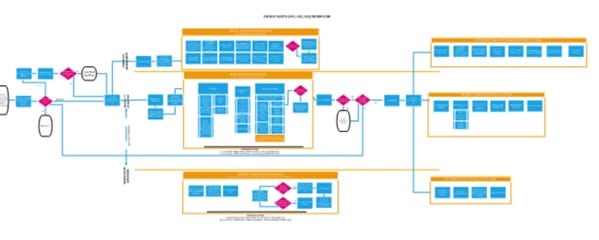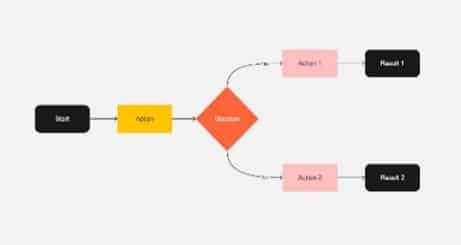How To Overcome Barriers to Cultural Change
October 3, 2023
Company culture is the personality behind your organization. It’s what makes you stand out in your industry and is reflected in your policies and procedures, leadership style, and employee interaction.
A strong company culture contributes to employee retention, efficient workflows, and high levels of customer satisfaction. But what happens when you change your company culture? How do you lead cultural change in the workplace?
Transforming your company’s culture can lead to confusion and frustration, so it’s best to implement a change management plan. Understanding change management and implementing these strategies is vital to your success. But it doesn’t end there.
Cultural shifts are inevitable throughout the life of your organization. Therefore, you’ll also need a continuous process improvement plan that ties in with your change management strategy.
What is change management?
According to Harvard Business School Online contributor Kelsey Miller, change management is all the actions an organization takes to make significant changes or adjustments. You can divide these activities into two categories:
Adaptive changes include small, incremental adjustments, such as adding a new position to address increased customer demands. These actions typically involve isolated parts of your company.
Transformational changes affect the entire organization. For example, changing your company’s culture would be highly transformational for your employees, customers, and overall brand strategy.
These change management examples have one thing in common: the need for process documentation to implement them. But first, let’s review the entire process in detail.
4 Elements of Change Management
The change management process is broken down into four elements:
- Goal Setting. What are you trying to accomplish by implementing cultural changes in your organization? What are the positive impacts you hope to obtain?
- Planning. Map the entire change management process from start to finish. You must also create change management documentation, assign tasks to departments or individuals, and determine metrics—Key Performance Indicators (KPIs)—to track progress.
- Implementation. Change management includes bringing all stakeholders on board with the new policies or procedures. You’ll also need to train your employees to use them effectively.
- Monitoring Progress. Tracking the effectiveness of your change management program allows you to make necessary adjustments if needed.
Change Management Process Steps
Knowing how to implement your change management plan will help you overcome the hurdles of getting employee buy-in. It also allows you to focus your efforts and potentially reduce costs.
Step 1. Set tangible goals.
Focus on setting goals you can measure: for example, decreasing the time it takes to fulfill a customer order. Collaborate with workers and managers at all verticals (levels) to discover where process gaps exist.
However, change doesn’t always have to be about process; it can also be cultural. For example, if you want your workforce to adopt an agile mindset, you could set goals that:
- Train managers to delegate authority.
- Encourage innovative approaches.
- Foster a culture of respect.
- Emphasize continuous improvement.
Also, during this initial stage, you should decide how to measure your progress. While benchmarks are a common tool to help move the project along, KPIs are used upon implementation to assess the new culture’s impact on your company. Examples of process KPIs include:
- Number of tasks completed on time
- Feedback percentage
- Compliance rate
- Number of employee complaints
- Budget considerations, including costs
Process KPIs provide a way to measure outcomes against stated goals. They also show you where you are improving and the areas where you need to adjust your procedures.
Step 2. Map the entire process.
Process mapping involves creating a diagram or flowchart to illustrate your company’s change management policies, standards, workflows, and tasks. It directs the project and shows how the change management project will be completed.

Step 3. Create change management documentation.
Start with a policy document containing a strong purpose statement and the reason for the changes. Build a case for why the culture shift is important to all stakeholders and highlight the expectations of those carrying out the change management project.
Next, create your change management standards using your previously mentioned policy statement. A standard operating procedure format is best and should provide:
- General guidelines for carrying out change management tasks
- Deadlines and benchmarks for project completion
- Document governance rules, including authorized access, file storage, and version control
Step 4. Document the changes.
While your change management documentation is directed toward managers and subject matter experts (SMEs), the tasks for carrying out cultural changes will be directed toward employees. For this reason, writing each procedure in a clear, easy-to-read format is essential.
Once you have all tasks documented, have a professional proofreader review each piece to provide error-free instructions. Then, ensure proper sign-off before publishing the changes.
Step 5. Implement your changes.
The biggest challenge to implementing cultural change is getting employee buy-in, especially if this hasn’t happened in a long time. Doing things the same way for many years often builds silos, and subcultures may have developed over time.
Another challenge is the different demographics within your company. For example, a 55-year-old person who’s been with your company for many years may have a harder time adapting to the changes than a younger, less experienced worker. Add the need to upgrade technology or software applications, and you could receive some pushback.
These and other challenges highlight the need for effective communication across all areas of your organization.
Let employees and managers know of your plans to change the company culture well before any planning starts.
This strategy will help all stakeholders feel like they are part of the process and hopefully facilitate buy-in later.

A cultural rollout plan is often required to get everyone on board. Some of the most successful, forward-thinking brands utilize several marketing assets, including:
- Banners
- Flyers
- Emails
- Handouts
- Dedicated web copy
These are just a few ideas to get your employees and managers on board with the changes. A team of experienced copywriters can help you plan, create, and implement your change management strategy.
Step 6. Conduct training.
New policies, standards, and work instructions require training to ensure everyone in your organization understands their roles within the culture. During the training process, you may find several procedures don’t fit correctly within the new guidelines. This realization is another reason for conducting training and allows managers to receive feedback from their team members concerning the changes.
Training can be anything from simple roundtable discussions to complete classroom instruction. Interactive role-playing is a great way to test your new procedures against real-world scenarios. You could even introduce gamification and give out prizes or awards to those who can answer the most questions or complete tasks within a certain amount of time.
Step 7. Track your outcomes.
In step one, you decided on the KPIs to monitor the effectiveness of your change management program. Now it’s time to put this strategy into practice.
To obtain the necessary data, you’ll first need to have several templates in place. These documents include:
- Employee assessments
- Compliance reports
- Employee surveys
- Mishap reports
- Readiness assessments
- Customer surveys
- Tests and quizzes
You can place many of these tools on your company’s website or print and disseminate them to stakeholders directly affected by the changes. Once you start receiving the data, log your KPIs as you go. Tracking cultural change is an ongoing process and should be reported regularly.
Step 8. Manage your documents.
Your change management process documents need a home separate from all your other organizational documents. You need a document management system that offers:
- Ease of use
- Version control
- Search and tag functions
- Excellent security
- Collaboration capabilities
- Authorship control
Document management is more than merely storing digital files on a computer. You’ll need to identify current document versions, migrate files from legacy storage systems, and share documents with only those who are authorized to see them.
Change Management Versus Continuous Improvement
Changing an established company’s culture is difficult, but if you do it in small steps over time, you are more likely to achieve your goals. Having an ongoing Continuous Improvement Program can help.
But what is a Continuous Improvement Program, exactly?
Continuous process improvement is similar to change management, but you do it over time instead of implementing the changes all at once. It involves constant tracking and monitoring of your process KPIs and adjusting as you go. It may even mean deleting processes that don’t add value to your organizational workflow.
By implementing a plan for continuous improvement, you may realize higher productivity, improved customer service, and lower employee turnover. It can also save time and money by streamlining workflows while enhancing the quality of your products or services.
Steps for Continuous Improvement
Continuous improvement is an ongoing strategy. Therefore, the following steps often overlap, making the documentation process vital to your success.
Step 1: Assess each process.
In this initial step, you’ll select the processes that need improvement. You do this by assessing their process scope and usability, employee satisfaction with the procedures, and possible duplication with similar tasks.
Step 2: Set goals.
Define what you want from your new processes. Make your goals measurable, actionable, and relevant to solving current problems. Also, assign a timeline for accomplishing each objective.
Step 3: Map each process.
Instead of mapping your entire organizational workflow, like during a change management campaign, you should focus on one process at a time. Map each step chronologically and assign the appropriate symbols to create a visual diagram.

Step 4: Perform a qualitative analysis.
Assess each activity or task to identify which adds value and which needs to be deleted. Eliminate duplicated activities or ones that cause barriers to overall productivity.
Step 5: Improve the process.
This step is the process improvement phase and involves key stakeholders brainstorming ideas and developing solutions to current problems. Once you decide on a proper course of action, you must document the new processes, publish them, and manage your files for easy retrieval if you need to make changes in the future.
Step 6: Evaluate and monitor.
Continuous improvement means constant monitoring and tracking process KPIs. While quantitative data is essential, you can also use a qualitative approach.
For example, employee feedback can tell you how well the new procedures integrate into current workflows. Likewise, customer surveys provide insights into which service tasks are working and which need to return to the planning stage.
Final Thoughts
Your corporate culture is the personality behind your organization. It is the culmination of beliefs, values, and behaviors that define who you are as a company. It’s what keeps your employees and customers loyal to your brand.
Changing your company culture is a huge undertaking. Hopefully, this article has shed some light on the methods for effective cultural change within your organization. Use it as a handy reference when you need help with your change management and continuous improvement strategies.































